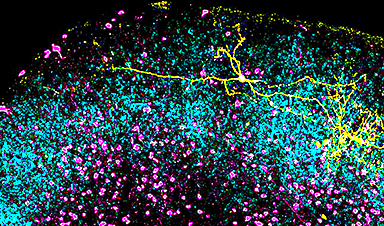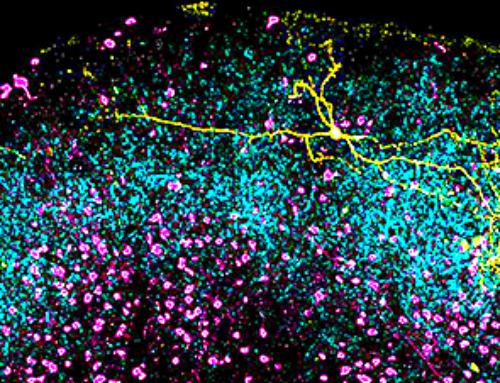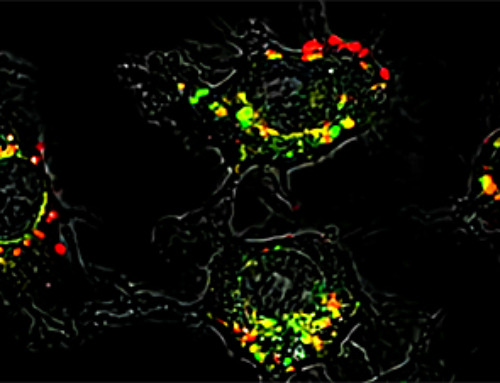Scientists have assembled the world’s smallest house by using a combination of robotics and nanotechnology. The micro-house even has a door that a house mite can fit through.
The house has been devised, according to Engadget, as a proof-of-concept study from a nanorobotics team based at the Femto-ST Institute in Besancon, France. The researchers successfully assembled a new microbotics system termed the μRobotex nanofactory. By deploying tiny robots the researchers can construct microstructures within a large vacuum chamber. Within this they can fix components onto optical fiber tips at a level of nanometer accuracy.
The idea behind the microhouse construction was in order to demonstrate that the latest advances in optical sensing technologies can be used to manipulate ion guns (via gas injection), electron beams and finely controlled robotic piloting, so that a variety of different constructs can be rendered. As an example of the complexity and tiny scale of operations, the ion gun focuses on an area only 300 micrometers by 300 micrometers so that it can to fire ions onto the fiber tip and silica membrane.
This forms part of the area of lab-on-fiber technologies. In the early stages of this technology there were no robotic actuators available for for nanoassembly, which limited what engineers could achieve in terms of creating microstructures at the nano-scale. A recent advance in miniaturtized-sensing elements has addressed this. These sensing elements can be fitted onto fiber tips, allowing scientists to manipulate different components.
The technology allows enables scientists to insert optical fibers as thin as a strand of human hair into previously inaccessible locations such as jet engines, to detect radiation levels, or into human blood vessels to detect viral particles.
Image Credit: FEMTO-ST Institute
News This Week
Lipid nanoparticles discovered that can deliver mRNA directly into heart muscle cells
Cardiovascular disease continues to be the leading cause of death worldwide. But advances in heart-failure therapeutics have stalled, largely due to the difficulty of delivering treatments at the cellular level. Now, a UC Berkeley-led [...]
The basic mechanisms of visual attention emerged over 500 million years ago, study suggests
The brain does not need its sophisticated cortex to interpret the visual world. A new study published in PLOS Biology demonstrates that a much older structure, the superior colliculus, contains the necessary circuitry to perform the [...]
AI Is Overheating. This New Technology Could Be the Fix
Engineers have developed a passive evaporative cooling membrane that dramatically improves heat removal for electronics and data centers Engineers at the University of California San Diego have created an innovative cooling system designed to greatly enhance [...]
New nanomedicine wipes out leukemia in animal study
In a promising advance for cancer treatment, Northwestern University scientists have re-engineered the molecular structure of a common chemotherapy drug, making it dramatically more soluble and effective and less toxic. In the new study, [...]
Mystery Solved: Scientists Find Cause for Unexplained, Deadly Diseases
A study reveals that a protein called RPA is essential for maintaining chromosome stability by stimulating telomerase. New findings from the University of Wisconsin-Madison suggest that problems with a key protein that helps preserve chromosome stability [...]
Nanotech Blocks Infection and Speed Up Chronic Wound Recovery
A new nanotech-based formulation using quercetin and omega-3 fatty acids shows promise in halting bacterial biofilms and boosting skin cell repair. Scientists have developed a nanotechnology-based treatment to fight bacterial biofilms in wound infections. The [...]
Researchers propose five key questions for effective adoption of AI in clinical practice
While Artificial Intelligence (AI) can be a powerful tool that physicians can use to help diagnose their patients and has great potential to improve accuracy, efficiency and patient safety, it has its drawbacks. It [...]
Advancements and clinical translation of intelligent nanodrugs for breast cancer treatment
A comprehensive review in "Biofunct. Mater." meticulously details the most recent advancements and clinical translation of intelligent nanodrugs for breast cancer treatment. This paper presents an exhaustive overview of subtype-specific nanostrategies, the clinical benefits [...]














Leave A Comment